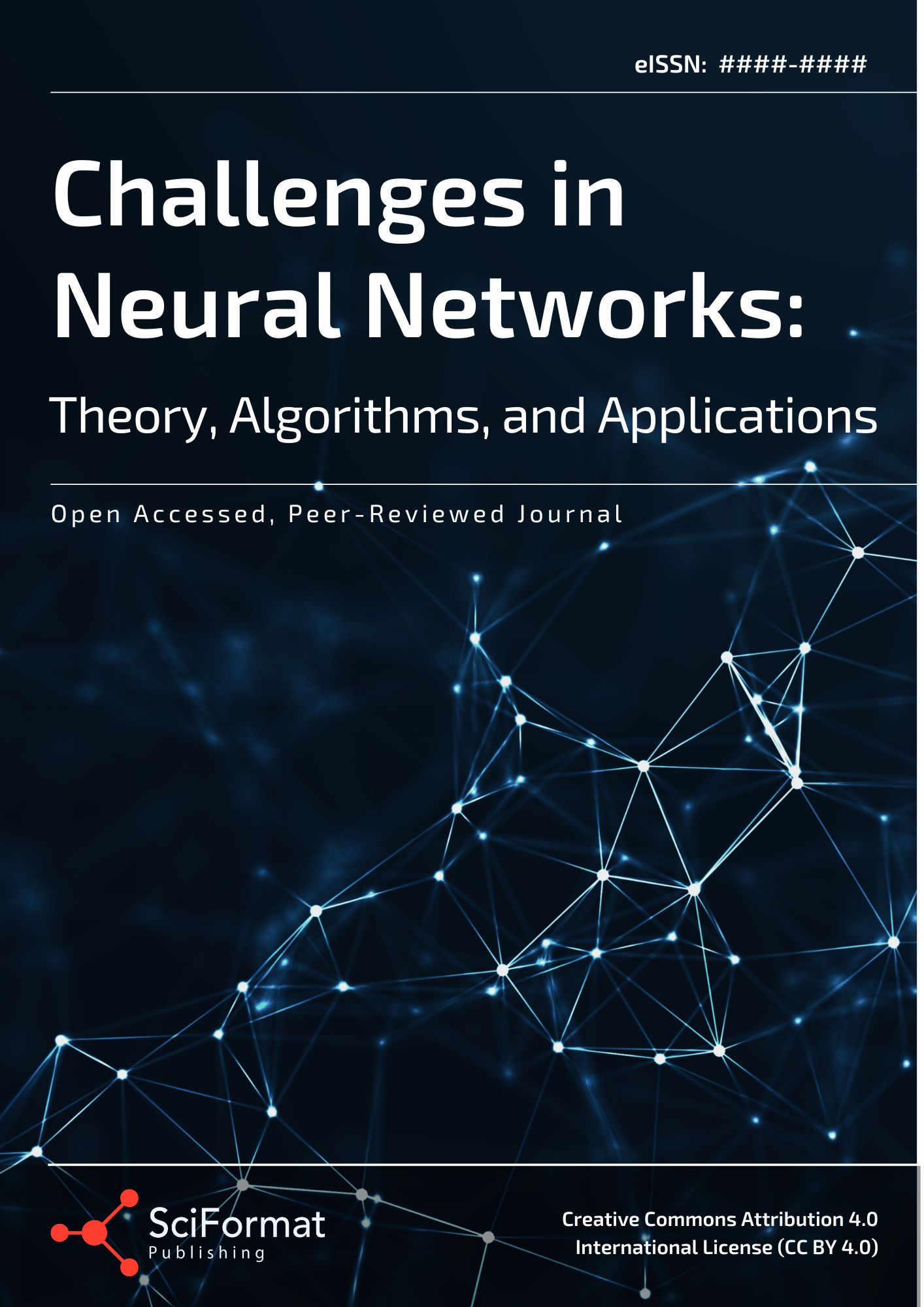About the Journal
Aim and Scope:
 Challenges in Neural Networks: Theory, Algorithms, and Applications aims to provide a platform for researchers, practitioners, and enthusiasts to explore the evolving landscape of Neural Networks and their applications across various domains. The journal focuses on addressing the challenges and complexities encountered in the theory, algorithms, and practical deployment of Neural Network models. By bringing together diverse perspectives, the journal aims to foster the exchange of ideas and advancements in the field.
Challenges in Neural Networks: Theory, Algorithms, and Applications aims to provide a platform for researchers, practitioners, and enthusiasts to explore the evolving landscape of Neural Networks and their applications across various domains. The journal focuses on addressing the challenges and complexities encountered in the theory, algorithms, and practical deployment of Neural Network models. By bringing together diverse perspectives, the journal aims to foster the exchange of ideas and advancements in the field.
The scope of the journal includes, but is not limited to, the following areas where neural networks are commonly used:
- Computer Vision: Neural network methods for tasks such as image classification, object detection, image segmentation, video analysis, and visual recognition.
- Natural Language Processing (NLP): Neural network approaches for language modeling, sentiment analysis, machine translation, text generation, question answering, and dialogue systems.
- Robotics and Autonomous Systems: Neural network techniques for perception, motion planning, control, and reinforcement learning in robotics and autonomous systems.
- Healthcare and Medical Imaging: Neural networks applied to medical image analysis, disease diagnosis, prognostic modeling, personalized medicine, and health monitoring.
- Financial Services: Neural networks for fraud detection, credit scoring, algorithmic trading, risk assessment, and financial forecasting.
- Recommender Systems: Neural network-based recommendation algorithms for personalized content, product, and service suggestions.
- Time Series Analysis: Neural networks for forecasting, anomaly detection, event prediction, and analysis of sequential data.
- Generative Models: Neural network methods for generating realistic images, music, text, as well as for style transfer and data synthesis.
- Industrial Automation: Neural networks in applications such as quality control, predictive maintenance, anomaly detection, process optimization, and intelligent manufacturing.
- Gaming and Virtual Reality: Neural network applications in game playing, character animation, content generation, and immersive virtual reality experiences.
The journal welcomes Original Research Articles, Review Articles, and Perspectives that address the challenges and advancements in Neural Networks, focusing on the theory, algorithms, and practical applications within these diverse domains. The goal is to provide a comprehensive resource for researchers and practitioners to exchange knowledge, share insights, and overcome the hurdles in the ever-evolving field of Neural Networks.
Open Access
Challenges in Neural Networks: Theory, Algorithms, and Applications is an open access journal, ensuring that all articles are freely accessible for reading and reuse as soon as they are published. Details on our open access policies and guidelines are available on the journal's Open Access Policy page.
Continuous Article Publishing (CAP):
Embracing the Continuous Article Publishing (CAP) model, the journal ensures the swift publication of articles upon acceptance, bypassing the need for assembling issues. This approach not only accelerates the dissemination of critical research findings but also facilitates immediate access and citation opportunities, aligning with our open access commitment. CAP underscores our dedication to making AI research as current and impactful as possible, providing the academic and professional communities with ongoing, timely access to important work in the field.
Frequency of Publication:
Challenges in Neural Networks: Theory, Algorithms, and Applications combines the CAP model with an annual volume compilation. Throughout the year, articles are published as soon as they have undergone the rigorous peer review process and are ready for dissemination, ensuring timely access to the latest research findings. This continuous publication model allows for the immediate visibility and citation of articles, aligning with our dedication to fostering rapid and open access to knowledge.
At the end of each year, the journal compiles these articles into a single volume, marking an annual milestone in the journal's contribution to the field of Neural Networks. This hybrid approach enables us to maintain the benefits of continuous article publishing—such as faster dissemination and enhanced accessibility—while also offering an annual volume that encapsulates the year’s advancements and discussions for archival and citation purposes.
Bibliographic information
ISSN: request pending (Online)
DOI: https://doi.org/10.69635/cnntaa





